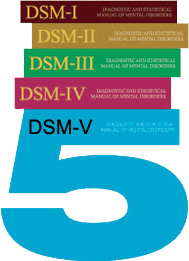News and Notes from The Johnson Center
Is Asperger’s Gone?
JCCHD | Fri, November 07, 2014 |Is Asperger’s gone? How have the changes made in the DSM-5 affected our children in schools and their ability to access care?
If you have a child with autism or work with families affected by autism, you have likely heard of “the DSM.” The DSM is the Diagnostic and Statistical Manual of Mental Disorders. It is published by the American Psychiatric Association and it is the primary manual used by clinicians to guide an autism spectrum disorder diagnosis. The latest edition, the fifth edition, was released in May, 2013.

One of the most significantly changed areas was the autism and developmental disorders section. The previous edition, the DSM-IV, included separate diagnoses associated with autism spectrum disorders: Autistic Disorder, Asperger’s Disorder, and Pervasive Developmental Disorder Not Otherwise Specified (or PDD-NOS). In the DSM-5, these separate diagnoses have been replaced with an umbrella diagnosis “Autism Spectrum Disorder” which is further defined by the level of severity of the individual’s deficits, with Level 1 being the least severe and Level 3 being the most severe.
This change has raised many questions and concerns. What happens to those previously diagnosed with Asperger’s Disorder? Many individuals with Asperger’s Disorder closely identify with the diagnosis and what it means for them. People have wondered, “does this mean I no longer have Asperger’s?” The DSM-5 notes that individuals with Asperger’s Disorder should not lose an autism spectrum diagnosis, stating “Individuals with a well-established DSM-IV diagnoses of autistic disorder, Asperger’s disorder, or pervasive developmental disorder not otherwise specified should be given the diagnosis of autism spectrum disorder.” However, if the individual is re-evaluated, the specific label will likely change. Despite this, clinicians have the flexibility to include the DSM-IV diagnosis of Asperger’s Disorder in their clinical reports, along with the new DSM-5 diagnosis. Therefore, there are definitely changes to the label, but Asperger’s Disorder will not disappear from an individual’s history.
Changes to the DSM-5 have also sparked concerns regarding how diagnostic changes will impact access to special education services. Schools use a separate system from the DSM for identifying individuals with autism, through the Individuals with Disabilities Improvement Act (IDEA), 2004 (300.8 (c) (1)(i); IDEA, 2004). If a child qualifies, an “educational qualification as a student with autism” is given based on the results of a Full Individual Evaluation (FIE) completed through the school district. Therefore, it is proposed that changes to the DSM-5 criteria should not directly influence services provided to students qualifying under educational law. Although, it is possible that changes to the DSM-5 will indirectly impact the educational system. For example, if a private evaluation is completed using the DSM-5, results might be reviewed and considered as part of a child’s FIE.
Overall, changes to the DSM-5 classification system are still relatively new and much is still unknown regarding the impact. Many private clinicians are just now transitioning to the use of the new criteria. It is critical that research is completed examining the use of the new criteria and its impact on individuals and services over time. It is also important that clinicians are knowledgeable about the changes and use their clinical judgment in applying the criteria. Ultimately, there is still much to be determined regarding the impact of the DSM-5.



